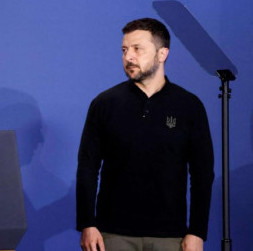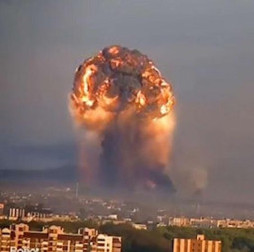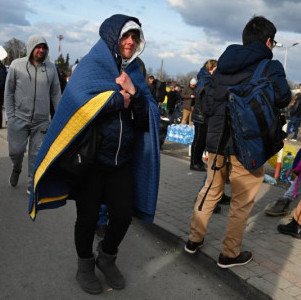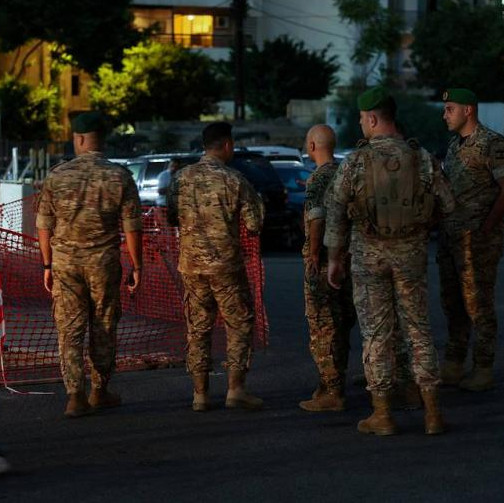On December 12, Pacific Fleet's Project 955 Borei ballistic missile submarine (SSBN) "Vladimir Monomakh" carried out a salvo launch of four R-30 Bulava missiles from the 50-meter depth in the Sea of Okhotsk. The missiles flew 5,5 thousand kilometers, and their warheads landed dead on target at the Chizha test range of the polar Yamal Peninsula. This was immediately reported to Russian President Vladimir Putin by Defense Minister Sergei Shoigu, who informed the Supreme Commander-in-Chief on the accomplished training of strategic nuclear forces.
The Bulava salvo launch was not the only test of Russia's strategic deterrence forces. A few days before, on December 9, a R-29RMU2 Sineva ballistic missile was launched by the Northern Fleet's K-18 Karelia Project 667BDRM Delfin-class nuclear submarine. This was also an underwater launch from the traditional 50-meter depth, and it took place in the Barents Sea targeting the Kamchatka Kura missile test range. The same day witnessed another strategic missile launch of the RS-24 Yars from the land-mobile complex at the Plesetsk Cosmodrome, Arkhangelsk region.
The same day, there were launches of strategic ALCMs X-101 and X-555 (a conventional version of the strategic X-55 missiles) targeting the Kura (in Kamchatka, as we have mentioned) and Pemboy (located in the Komi Republic's polar tundra) test sites. This involved Tu-160 and Tu-95MS long-range bombers that took off from the Engels (Saratov region) and Ukrainka (Primorsky Krai) air bases.
Each such launch, each exercise by crews of submarines, strategic bombers and the ground-mobile Yars complex to use their most formidable weapons had its own features. For instance, the X-555 missiles launched by the Tu-160 and Tu-95MS aircraft were used during a Russian Armed Forces' mission in Syria in November 2015. Firing 34 warheads against terrorists of the banned Islamic State and hitting hard targets as represented by underground military equipment overhaul and repair factories, militant headquarters, training and retraining camps, command posts, they created a huge sensation at the Middle Eastern front. They demonstrated the power of Russia's strategic aviation, which made a non-stop flight from domestic airfields across the Caspian Sea and Iran, received a target indication in the air and destroyed the designated facilities with a precision-guided attack. After refueling in the air, they returned to the departure airfield in Mozdok.
There are also interesting details about underwater launches of sea-based ballistic missiles. Open data suggests, for instance, that the underwater launch of a Sineva liquid-fueled ballistic missile was carried put a little over a year ago – in October 2019 from the K-18 Karelia submarine. But the Sea of Okhotsk salvo launch of a solid-fuel Bulava missile from the SSBN Vladimir Monomakh was first of its kind whatsoever. This appears strange. After all, the Project 955 Borei-class strategic submarine cruisers K-550 Alexander Nevsky and K-551Vladimir Monomakh that joined the Pacific Fleet back in 2013 and 2014, have never before taken a single shot from the Sea of Okhotsk against the Chizha site range, i.e. from east to west. They carried out all the Bulava missile launches after its rolling off the production line and before joining the Northern Fleet. What's interesting, in the summer of 2015, the crew of the SSBN Vladimir Monomakh already executed a missile salvo launch. There were admittedly two rockets then. And her fellow ship Alexander Nevsky fired four missiles at once in May 2018, also from the Northern Fleet underwater site range against the Kamchatka Peninsula.
Why so? According to unidentified sources, there were several reasons for that. First, the telemetry data acquisition system supposed to track the rocket's flight from the east of the country to the west, proved unprepared. The telemetry system for reference measurement of missile flights from west to east, located along the Arctic Ocean coast, has been functioning correctly for a while. All the flight tests from the White and Barents Seas, as well as from the Plesetsk site towards the Kura test range are being recorded with great precision. But there was a lack of stations to operate along a different trajectory – through the Siberian taiga and the Arctic Circle. Now they do exist, making the missile flight from east to west no longer anonymous, and subsequently feasible.
Secondly, another technical issues has been solved. The fact is that in Kamchatka's Vilyuchinsk, where the Project 955 SSBNs are based, there was an unequipped berth with its relevant crane equipment to reload solid-fuel R-30 Bulava missiles. Nor did the Pacific Fleet have a missile carrier ship capable of performing this complex and time-consuming operation. In essence, should the Borei fire a Bulava, it needed to go north to replace it. Now, judging by the efficiency of Vladimir Monomakh's job, all these Pacific Fleet issues have been solved. According to information from the public media, Russia has commissioned three Project 20183 vessels able to tackle tasks of transporting and reloading missiles aboard the SSBNs, with two more of them being built.
But this is not all the news following the last 2020 training activity of the Russian strategic deterrence forces. I would like to make a point of the highest professional skills of our SSBN crews, namely that of Vladimir Monomakh. It sounds like just "an underwater-launched missile salvo" but well-informed people understand what a difficult task it is and how much skill it requires to launch a rocket and not to send a submarine to the bottom, literally.
After all, each missile exit from an underwater 50-meter deep silo is a humming blow to its body. Imagine a 40-ton rocket take off, thrown out of the depth by compressed air, and the seismic shock the NPS itself receives at the same time - it's like a magnitude 5 to 6 earthquake, if not stronger. And now imagine four successive shocks of this kind! How skilful should a crew be to keep the sub on an even keel, not to fall into an abyss and withstand this terrible top-to-bottom push. And to be prepared for new launches. This is about supreme expertise, character building, stress resistance and everything else our submariner experts are distinguished by.
And, of course, the Bulava missile it should not go unspoken, with the latest launches becoming its 38th in a row. Many people remember how the domestic media lambasted designers with the Moscow Institute of Thermal Technology headed by a current Academician of the Russian Academy of Sciences, Hero of Labor and State Prize winner Yuri Solomonov, who created the missile, for its unsuccessful. For one reason or another. By the way, the reasons have never been repeated, which testifies to design reliability but errors of the factory engaged in missile assembly. However, detractors and competitors invented a thousand ways to malign the MITT team. The most fair-spoken one was "incompetent". And what does statistics indicate? Of the 38 launches, only seven failed, i.e. 82 percent of unconditional success. Not a single rocket design bureau managed to compare that well in our country's the entire history.
And today, all the four Borei-class SSBNs with the Northern and Pacific fleets – Yuri Dolgoruky, Alexander Nevsky, Vladimir Monomakh and Prince Vladimir – are equipped with the R-30 Bulava missiles, each having 16 of them. An additional four nuclear subs are being built under the updated Project 955a, and those will also be armed with the Bulava. 128 R-30 missiles with six to ten nuclear warheads, along with the ground and air components of the strategic deterrent forces, will secure our country's sovereignty, independence and national interests.
The last but not the least thing is that the latest drills involving Russia's strategic deterrent forces was certainly overlooked by the West. Primarily the United States. As Washington's START-3 bona fide partners, we routinely warned them in advance about when and where our missile were going to be launched. This was done to prevent panic and to let them prepare to monitor our launches (as stipulated by the treaty for both sides). And, of course, in order for them to think about whether they need to extend this agreement or hell with it and let's do without mutual warnings and mutual control. Let's just tick each other off. But let's not guess what this may entail.
And the very last thing. Commander of the Strategic Missile Forces Colonel-General Sergey Karakayev said a short while ago that two more Avangard strategic missile systems with hypersonic boost-glide weapons will become operational by the end of this year, and those cannot be intercepted by any missile defense systems, either current or probable. We will have a total of four complexes of this kind.
This is a warning and not a threat, neither are the final strategic deterrent forces' drills. Don't give us a scare, talking about "NATO strengthening and the grouping of US ships in the Black Sea" or anywhere else – let's better settle everything. On equal terms and to the common good for us and the world.









